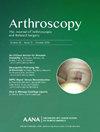生成与非生成人工智能
IF 4.4
1区 医学
Q1 ORTHOPEDICS
Arthroscopy-The Journal of Arthroscopic and Related Surgery
Pub Date : 2025-02-08
DOI:10.1016/j.arthro.2024.12.001
引用次数: 0
摘要
人工智能(AI)是一个巨大的流行语,一个令人困惑的主题,但也是一个不可避免的现实。生成和非生成AI是AI的两个核心子类型。生成式人工智能使用当前数据来理解模式并生成新信息,它在生成合成医学图像、增强手术模拟和扩展训练数据集方面尤其有价值。生成对抗网络(gan)、大型语言模型(llm)和变分自动编码器(VAEs)等技术允许创建逼真的模拟、文本和模型,可用于围手术期通信和规划。相反,非生成人工智能的核心是对预先存在的数据进行检查和分类,以制定预测或决策——最流行的名称是机器学习。这种方法在预测手术结果、分割医学图像和确定患者风险概况等任务中很有帮助。卷积神经网络(cnn)、随机森林和支持向量机(svm)等模型被广泛用于这些目的,在临床决策中显示出较高的准确性和可靠性。虽然生成式人工智能为创建新数据和模拟提供了创新工具,但非生成式人工智能在分析现有数据以告知患者护理方面表现出色。这两种方法都具有支持临床工作流程自动化冗余和提高效率的潜力。然而,人工智能在骨科中的应用也存在局限性,包括模型中存在偏见的可能性,解释人工智能驱动的见解的挑战,以及监督的道德规范。随着人工智能在骨科领域的整合不断发展,从业者必须了解这些技术的能力和局限性,以充分利用其潜力并建立适当的治理。本文章由计算机程序翻译,如有差异,请以英文原文为准。
Generative Versus Nongenerative Artificial Intelligence
Abstract
Artificial intelligence (AI) is a colossal buzzword, a confusing subject matter, but also an inevitable reality. Generative and nongenerative AI are the 2 core subtypes of AI. Generative AI uses current data to understand patterns and generate new information, and it is especially valuable in producing synthetic medical images, enhancing surgical simulations, and expanding training datasets. Techniques such as generative adversarial networks (GANs), large language models (LLMs), and variational autoencoders (VAEs) allow for the creation of realistic simulations, text, and models that can be used for perioperative communication and planning. Conversely, nongenerative AI is centered on the examination and categorization of pre-existing data to formulate predictions or decisions—the most popular denomination namely machine learning. This approach is instrumental in tasks such as forecasting surgical outcomes, segmenting medical images, and determining patient risk profiles. Models such as convolutional neural networks (CNNs), random forests, and support vector machines (SVMs) are widely used for these purposes, demonstrating high accuracy and reliability in clinical decision making. Although generative AI offers innovative tools for creating new data and simulations, nongenerative AI excels in analyzing existing data to inform patient care. Both approaches have the potential of supporting clinical workflows to automate redundancies and improve efficiencies. However, there are also limitations in the application of AI in orthopaedics, including the potential for bias in models, the challenge of interpreting AI-driven insights, and the ethics of oversight. As the integration of AI in orthopaedics continues to grow, it is essential for practitioners to understand these technologies' capabilities and limitations to harness their full potential and establish appropriate governance.
求助全文
通过发布文献求助,成功后即可免费获取论文全文。
去求助
来源期刊
CiteScore
9.30
自引率
17.00%
发文量
555
审稿时长
58 days
期刊介绍:
Nowhere is minimally invasive surgery explained better than in Arthroscopy, the leading peer-reviewed journal in the field. Every issue enables you to put into perspective the usefulness of the various emerging arthroscopic techniques. The advantages and disadvantages of these methods -- along with their applications in various situations -- are discussed in relation to their efficiency, efficacy and cost benefit. As a special incentive, paid subscribers also receive access to the journal expanded website.

 求助内容:
求助内容: 应助结果提醒方式:
应助结果提醒方式:


